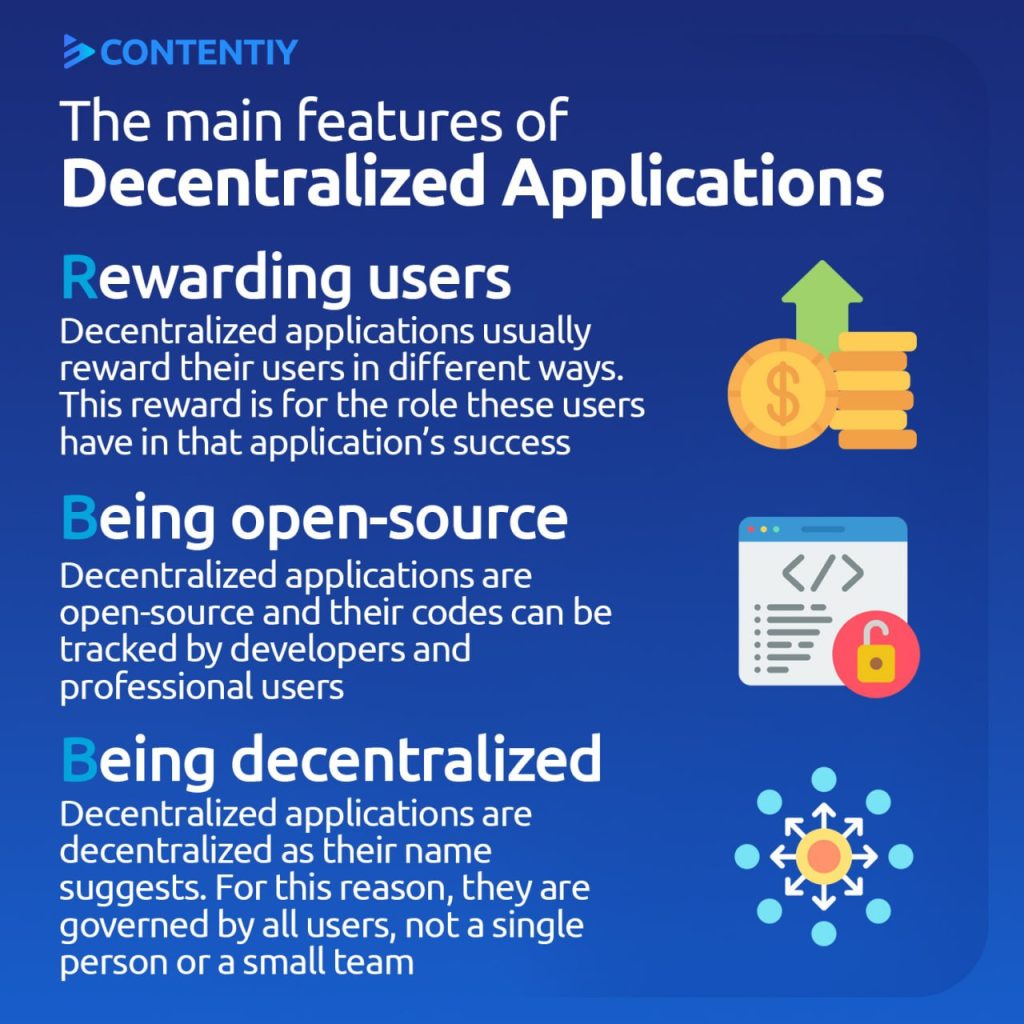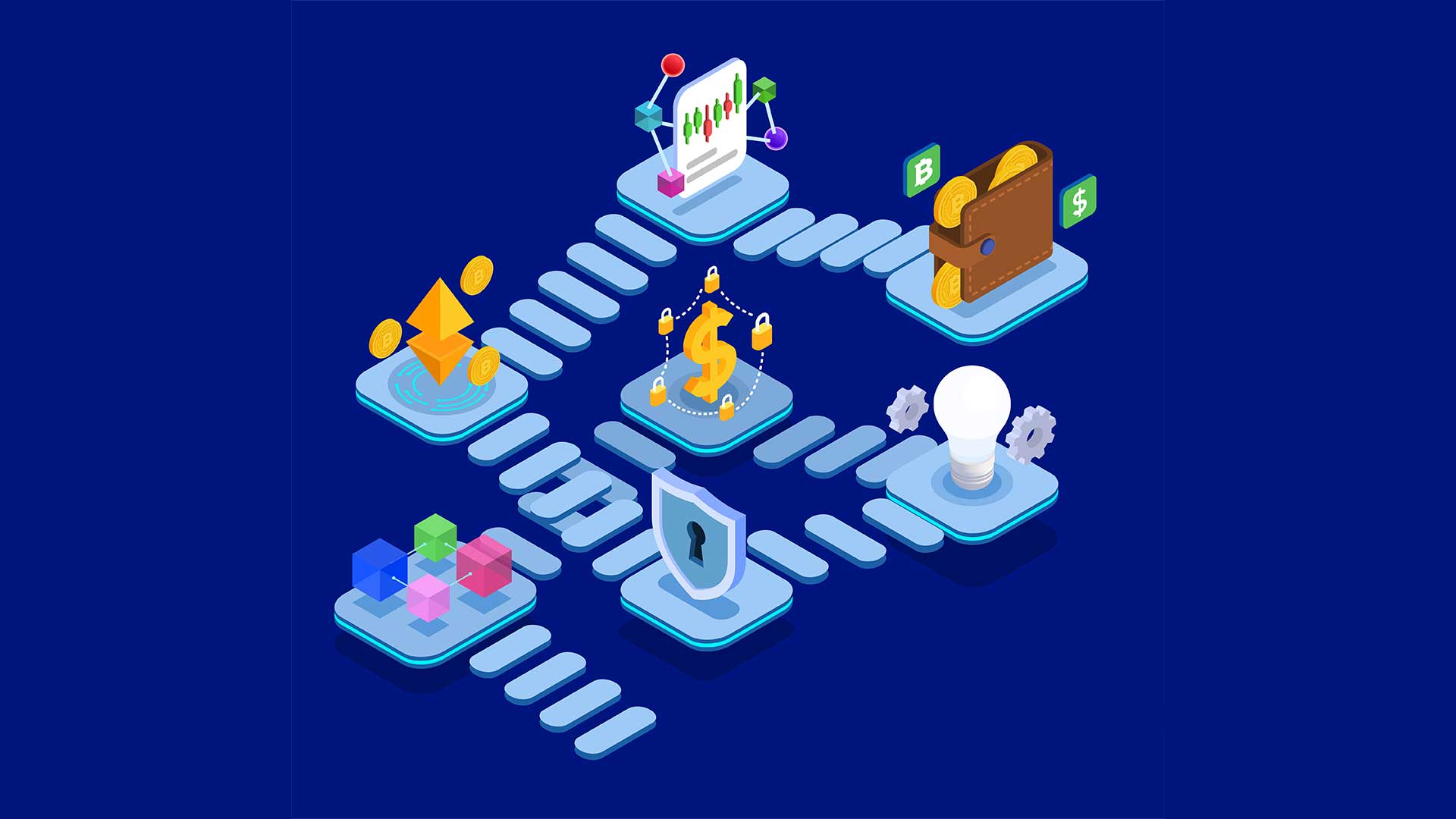What is a decentralized application or DAPP?
First, we should inform you that a decentralized application doesn’t seem different from a centralized application like Instagram in appearance. The point that differentiates a DAPP from a centralized application is its backend.
A decentralized application or DAPP doesn’t use a single server. Instead, it uses smart contracts as its backend. For this reason, no single entity can make decisions or govern this application alone. The developer of a decentralized application is only its developer, not its owner. As soon as this application is released, its users become its owners.
We have repeatedly heard about centralized giants like Facebook selling users’ data to advertising agencies. It has definitely happened to you that you search for something on Google and then see related advertisements on YouTube. Or a giant like Google can easily limit its users’ access to a specific form of content. These are just a few limitations centralized applications can impose on their users.
But what happens if an application is governed by all its users? All decisions are made only if the majority agrees with them. In such a situation, the benefits of all or most users are considered rather than those of a single person or a small group. This is the vision decentralized applications are trying to realize.
Decentralized autonomous organization or DAO
A decentralized autonomous organization or DAO is not governed by a single person but by all users. A DAO has a tangible goal and vision, like a traditional physical organization. The difference is that in a DAO, all users are stakeholders. You may have heard the term governance token. A governance token is the native token of a DAO whose holders can participate in that DAO’s decision-making. MakerDAO is a famous example of a DAO in the crypto world, with the MKR token as its governance token.
How does a decentralized application or DAPP work?
We have already mentioned that a decentralized application or DAPP uses smart contracts as its backend. As the end user, this means you don’t feel any difference since the Frontend is like a centralized application. The difference lies in the backend.
| A centralized application | A decentralized application |
| Frontend: HTML – CSS – JavaScript Backend: Java – Phyton – PHP – C# – C++ | Frontend: HTML – CSS – JavaScript Backend: smart contracts |
Since decentralized applications rely on smart contracts, people do their activities through transactions. Imagine the decentralized version of Instagram. In this application, when you like a post, you are actually making a transaction to its smart contract. Or imagine a decentralized computer game. In these games, the battles you have with other players or the assets you win are all transactions to the game’s smart contract.
The smart contracts of these applications are coded so that when they receive a certain input in the form of a transaction, they get activated and do a particular activity. This is why the scalability of the blockchain they are based on is essential. Decentralized applications need to handle a great bunch of transactions per second. If their blockchain isn’t scalable enough, their speed is affected, and their fees go up significantly.
The main features of decentralized applications
We tried to explain what decentralized applications are and what features they have. In this part, we will discuss three main features of decentralized applications: being open-source, decentralized, and rewarding to users.
Being open-source: decentralized applications are open-source, meaning anyone can track their codes, which means all professional users can check the codes of DAPPs and observe all changes.
Being decentralized: decentralization is the most crucial feature of decentralized applications, and it’s evident from their names.
Rewarding users: unlike traditional centralized applications, decentralized applications reward their users for all their contributions to their success.

The best-known examples of decentralized applications
Since we answered the question of what is a decentralized application, or DAPP, is, we can go on to the final part of the article to refer to and explain some of the best-known examples of decentralized applications. Of course, we have to mention that decentralized applications aren’t just limited to these examples. These are just some successful examples that have brought decentralized applications into actual use.
Decentralized exchange or DEX
A decentralized exchange or DEX is the decentralized version of centralized cryptocurrency exchanges we have today. A decentralized exchange is a smart contract that connects to your web 3.0 wallet and trades from within your wallet. For this reason, it doesn’t need registration or passing KYC. Uniswap, Curve, Balancer, and SushiSwap are only a few examples of today’s decentralized exchanges.
Play-to-earn games
Play-to-earn games are popular examples of decentralized applications due to the change they made to the gaming industry. Play-to-earn games reward their users with assets that have real value. These assets may be cryptocurrencies that can be sold in cryptocurrency exchanges or NFTs that can be traded in NFT marketplaces.
Conclusion
The tiny-tiny answer to our main question of what a decentralized application is, or DAPP, would be that a decentralized application or DAPP is an undeniably significant achievement in the crypto world. It is one of the reasons we claim that blockchain technology isn’t just limited to money. This technology is so strong that it can affect all aspects of our lives. What do you think about decentralized applications? What future do you imagine for them?
What is a decentralized application (DApp)?
A decentralized application, or DApp, is a software application that runs on a decentralized network, rather than on a centralized server.
How does a DApp work?
A DApp works by using a blockchain network, which allows it to operate in a decentralized manner. This means that the application can operate without relying on a single point of control, which makes it more secure and less vulnerable to attacks.
What are some examples of DApps?
Some examples of DApps include decentralized finance (DeFi) applications, such as Uniswap and Aave, which allow users to borrow and lend cryptocurrency without the need for a centralized intermediary. Another example is CryptoKitties, a collectible game built on the Ethereum blockchain.
What are the advantages of using a DApp?
One advantage of using a DApp is that it is more secure since it operates on a decentralized network. Another advantage is that it can be more transparent since all transactions are recorded on the blockchain and can be viewed by anyone.
What are the disadvantages of using a DApp?
One disadvantage of using a DApp is that it can be slower and less scalable than a centralized application, since it relies on the consensus of the network to validate transactions. Another disadvantage is that it can be more complex to use, since it often requires users to have a basic understanding of blockchain technology.
How are DApps developed?
DApps are typically developed using smart contracts, which are self-executing contracts that run on the blockchain. Developers can use programming languages like Solidity to write these smart contracts, which can then be deployed on a blockchain network.
What is the future of DApps?
The future of DApps is uncertain, but many experts believe that they have the potential to disrupt many industries, including finance, gaming, and social media. As blockchain technology continues to evolve, it is likely that we will see more and more DApps being developed and used by people around the world.


